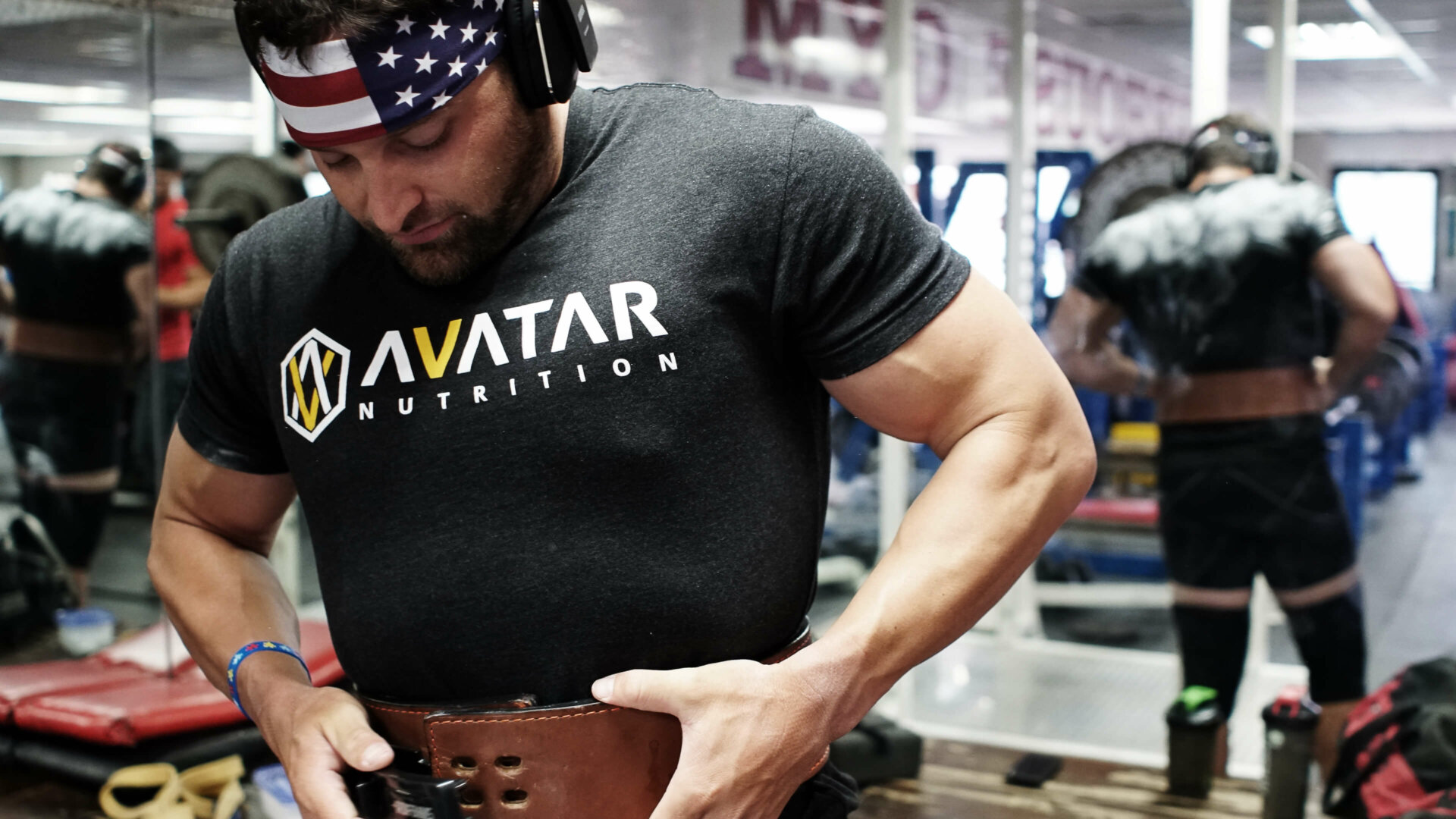If you lift weights long enough, a couple questions will inevitably enter your mind:
“How big can I get?”
“How big should I get?”
Glancing in the mirror or hopping on a scale isn’t going to get to the root of these questions- we need hard data to help guide us toward some quantifiable answers. Luckily, there is a metric called fat-free mass index (FFMI) that we can use as a general estimate of overall muscularity. Originally, it was used to help researchers and medical professionals identify protein malnutrition at the lower end of the FFMI spectrum [1], but the information we’re interested is located toward the higher end. If you know your height, weight, and have a measurement (or pretty good estimate) of body fat percentage (BF%), you’ve got all the information you need.
How is FFMI calculated?
You don’t need a PhD in mathematics to crunch these numbers. FFMI is basically BMI, but we remove your fat mass from the equation. The result is a measurement of your fat-free mass, scaled to your height. The following equation shows just how simple this calculation can be:
 [Eq 1.]
[Eq 1.]
You may not have a direct measurement of “fat-free mass” available, so here is a slightly longer version of the equation that assumes you are using your weight, and a measured (or estimated) BF% value:
 [Eq 2.]
[Eq 2.]
If you want to get a slightly more accurate number, you can do an additional height correction. You might be wondering why that is necessary, since height is already in the equation. This is true, but we still see that FFMI values are a little too low in shorter people, and a little too high in taller people (comparatively speaking). Even though height is squared in the equation, this doesn’t fully account for the 3-dimensional increase in lean mass we see with larger individuals; their bodies are taller, wider, and thicker from front to back. If you want to do a height correction, you can use either of the following equations; my research group developed the first [2], whereas Kouri et al. [3] developed the second.
![]()
or
![]()
To make your life a little bit easier, I have provided BioLayne.com with an Excel template to calculate all three of these values for you, so you can use whichever you prefer. All three values will be similar, so don’t lose too much sleep over it. We’re done sweating the details now; we have a number, and now we need to do something useful with it.
Download Template
1) Finding the limit
First, you can get a general idea of your potential to gain more lean mass by comparing your value to others. If you’re interested in seeing how big you might be able to get naturally, you could compare your number to people that are pushing the natural limits of muscularity. You might consider comparing to high-level collegiate or professional football players, whose body composition values have been published in numerous research papers [4][5][6]. You might even consider gathering some estimates of top-level natural pros across the country. As long as you can obtain access to a reasonably close estimate of their weight and BF% at a given time, you have what you need to calculate an approximate FFMI value. If you’re nowhere near their values, there’s a good chance that you’ve got plenty of room to grow! Obviously genetics will dictate a different “ceiling” level for everybody, but comparisons can give you a rough idea of where the upper limits are likely to exist.
There have been many arguments surrounding the maximum FFMI value that is naturally attainable. The first study looking at this question [3] suggested that 25 was about as high as most could achieve, but there are important caveats that accompany this number. The estimate comes from a sample of trained, natural gym-goers, but not elite athletes. Furthermore, the sample was relatively lean in general (12.5 ± 5.5% BF). In college football players, our group found that 28.1 was a more appropriate upper limit for most of the athletes, with a maximal observed value of 31.7 [2]. If you look at sumo wrestlers, we find average values around 26.6, with some individual athletes as high as 37 [7].
The evidence clearly indicates that higher FFMI is possible in people who have higher BF% or elite genetics. It might be appropriate to say that most people will fail to exceed 25 when they are in contest shape. But when it comes to maximal off-season limits with higher body fat, people who picked their parents well might feasibly shoot for values in the upper twenties, and some genetically elite unicorns may hit the low thirties.
2) Forecasting your off-season
Not everyone is born to push the natural limits of human muscularity (I know, it’s a hard pill to swallow). You can also use FFMI to make more targeted goals for your offseason. However, it’s important to recognize that when it comes to bulking and cutting cycles, your weight and FFMI goals are moving targets.
Based on a series of case studies [8][9][10] and a billion anecdotes, it’s safe to expect that some lean mass will be lost as you transition from an off-season bulk to stage-ready conditioning. You’ll need to budget some of this into your off-season plans; if you’re hoping to step on stage with an FFMI of 25, you’ll need to set your sights on an off-season fat-free mass value that puts you a little above 25. By using the longer version of the FFMI equation (Eq. 2), you can easily budget for a variety of variables in your off-season weight gain planning, such as:
- What is the highest BF% you’re comfortable with?
- How much lean mass do you anticipate losing during the subsequent cut?
- What do you estimate your personal FFMI limit to be?
My recommendation would be to break out a nice Excel sheet to do a little “guess and check” work. Put in your height, your FFMI goal, and the off-season BF% you are comfortable with. Next, rearrange the equation to calculate your projected off-season weight, like so:
 [Eq 3.]
[Eq 3.]
Obviously, you can rearrange this equation to calculate whatever parameter you want. For instance:
- If I get to 86 kilograms at 16%BF, what would my FFMI be?
- If I wanted a FFMI of 25 at 18%BF, how much would I need to weigh?
- If I wanted a FFMI of 26 at 78 kg, what would my BF% need to be?
If you want to make a totally useless and humbling calculation, see how short you’d have to be to match a “Mr. Olympia-level” FFMI value with your current weight and BF%. Do you even lift?
I included some off-season planning tools in the Excel template on BioLayne.com. There are numerous ways to rearrange this equation for a variety of planning options, but the template should be good enough to get you started.
Conclusion
With just a few easily measured or estimated values, you can calculate your FFMI. Despite its origins in the assessment of malnutrition, we can use this value to plan our off-season, assess our current status of muscularity, and evaluate our ability for future mass building.
References
- VanItallie TB, Yang MU, Heymsfield SB et al.: Height-normalized indices of the body’s fat-free mass and fat mass: potentially useful indicators of nutritional status. Am J Clin Nutr. 1990;52(6):953-9.
- Trexler ET, Smith-Ryan AE, Blue MN et al.: Fat-Free Mass Index in NCAA Division I and II Collegiate American Football Players. J Strength Cond Res. 2016.
- Kouri EM, Pope HG, Jr., Katz DL et al.: Fat-free mass index in users and nonusers of anabolic-androgenic steroids. Clin J Sport Med. 1995;5(4):223-8.
- Binkley TL, Daughters SW, Weidauer LA et al.: Changes in Body Composition in Division I Football Players Over a Competitive Season and Recovery in Off-Season. J Strength Cond Res. 2015;29(9):2503-12.
- Dengel DR, Bosch TA, Burruss TP et al.: Body composition and bone mineral density of national football league players. J Strength Cond Res. 2014;28(1):1-6.
- Trexler ET, Smith-Ryan AE, Mann JB et al.: Longitudinal Body Composition Changes in NCAA Division I College Football Players. J Strength Cond Res. 2017;31(1):1-8.
- Hattori K, Kondo M, Abe T et al.: Hierarchical differences in body composition of professional Sumo wrestlers. Ann Hum Biol. 1999;26(2):179-84.
- Kistler BM, Fitschen PJ, Ranadive SM et al.: Case study: Natural bodybuilding contest preparation. Int J Sport Nutr Exerc Metab. 2014;24(6):694-700.
- Robinson SL, Lambeth-Mansell A, Gillibrand G et al.: A nutrition and conditioning intervention for natural bodybuilding contest preparation: case study. J Int Soc Sports Nutr. 2015;12:20.
- Rossow LM, Fukuda DH, Fahs CA et al.: Natural bodybuilding competition preparation and recovery: a 12-month case study. Int J Sports Physiol Perform. 2013;8(5):582-92.

